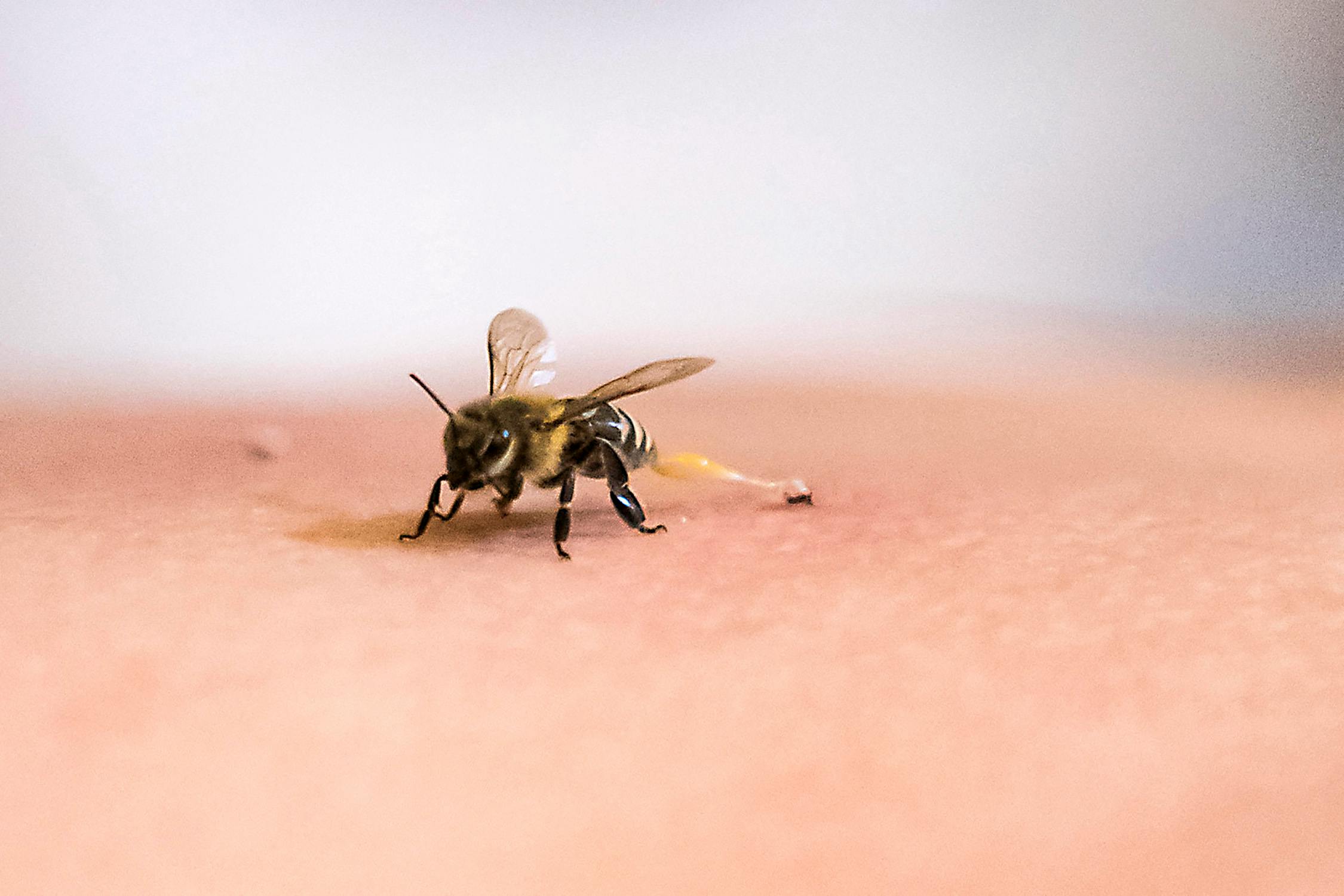Can bee stings fix what ails you?
There’s no proof, but “stinging influencers” are still embracing bee venom.
If you hear a package buzzing on your neighbor’s doorstep, it might contain 60 live honeybees.
And your neighbor might be planning to grab each bee with a pair of tweezers, hold the squirming insect up to their skin, and let it sting them. Bee-venom therapy (BVT for short) is the practice of stinging oneself with live bees or being injected with bee venom. The exercise is a popular alternative to traditional medical treatments for people with chronic diseases, and it’s been gaining buzz on TikTok and Meta’s Instagram.
Some think BVT provides relief for a range of ailments, from arthritis and herpes to Lyme disease. In the ’90s, “bee lady” Pat Wagner gained a cult following for using BVT to treat multiple sclerosis. Now, a variety of BVT programs focus on treating what many call “chronic Lyme.” The CDC recommends calling it post-treatment Lyme disease syndrome, as “chronic” implies the “symptoms are caused by an ongoing bacterial infection when, in fact, the cause is not currently known.”
Bee venom is made up of over 60 components woven together into a complex chemical structure, which makes it difficult to analyze. But there is research on the substance. One bee-venom compound, apamin, has been studied as an experimental treatment for central-nervous-system disorders like Alzheimer’s, said Stinglab founder and BVT coach Kate Hinkens.
“Bee venom is akin to taking a multi-spectrum drug,” according to the Heal Hive, a company that sells BVT “bootcamps” to people who have had Lyme disease and experience ongoing symptoms.
Which leads us to people stinging themselves at home. Small boxes of bees can be ordered from bespoke hive keepers or on eBay for about $1 per bee. Ferris Apiaries — which has been selling bees for use in BVT for 30 years — charges $20 for a box containing about 60 bees.
UPS and the USPS have no qualms shipping the live insects, including bees, snails, and worms. Ferris Apiaries founder Michelle Ferris told Sherwood News that bees have survived journeys from her and her husband’s South Carolina hives to customers in Alaska, San Diego, and Maine. It helps that they’re sent in a wooden box within a medical cardboard box.
Ferris said most BVT practitioners go through a box of bees every week or two, meaning live-sting treatment costs between $40 and $80 a month for the bees alone. Hinkens said for patients she’s coaching through BVT, she recommends pairing treatments with complementary supplements. She also offers a six-week course to guide people through the process for $2,000.
The Heal Hive says it charges $1,400 for six months of its beginning “bootcamps” and patients should budget another $700 annually for expenses like lab testing for exposure to toxins and in-home mold testing. The Heal Hive says that without insurance, each lab test can cost up to $30,000.
There’s also a time commitment. The Heal Hive says members should dedicate about seven hours a week to their coursework, which focuses on education around BVT research. They’re also given meal plans and testing as part of a personalized regiment and access to community forums. Stinglab offers one-on-one consultations around testing and stinging, and focuses on teaching research on BVT and the practice’s history as well.
Some enthusiasts save money by skipping out on coaches and bootcamps and teaching themselves how to sting with the help of growing online communities. Facebook groups of stingers share advice, and Reddit forums dedicated to different medical conditions debate the possible benefits of BVT for their symptoms.
Stinging influencers (including the founders of the Heal Hive and Stinglab) spread the word about BVT to their thousands of followers. On TikTok, 83,700 followers tune in to watch videos by “Heal With Liz,” who shares her experience stinging herself. Following an influencer’s road to recovery using BVT is a popular onboarding route to the alternative wellness treatment.
@itslizpadgett After 2.5 of not stinging, we shall resume 🫶🏼🐝 #bvt #beevenomtherapy #health #lymedisease #rfkjr ♬ Positive background music such as play and games(1251730) - earbrojp
The American Medical Association has warned Lyme patients not to spend money on unproven medical treatments, citing the spread of Lyme-related misinformation on social media, though it does not call out any specific treatment. In interviews with physicians, the AMA found that those with chronic Lyme symptoms are spending thousands of dollars on alternative treatments they find on their own, usually online.
A decade ago, an American with Lyme who chose traditional medical treatment faced average costs of $1,200 per infection. How much patients spend on treating symptoms that continue after an initial infection isn’t known.
Because post-treatment Lyme disease syndrome has no FDA-approved therapy plan, Dr. John Aucott, an infectious-disease physician and director of the Johns Hopkins Lyme Disease Research Center, told Sherwood that doctors make off-label prescriptions based on their personal judgment to treat post-Lyme ailments. He added that insurance doesn’t cover treatments considered to be alternative or complementary, meaning most patients pay costs out of pocket. Bee venom is unlikely to ever be designated as an approved drug, as the FDA has never approved a homeopathic remedy.
With off-label treatments possibly costing patients tens of thousands of dollars, BVT is an option that many are buzzing about, even if there’s no proof that seven stings a day is keeping the doctor away.
